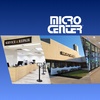{shortcode-c31f174641e58ed6f53c638da2ac5d061b3e868f}
{shortcode-84fbfa98f697fe2d4ab09c189b5c3b17114b2209}
A view from the eighth-floor deck below the observatory showcases stunning views of the campus and the Boston skyline beyond it. It is also a chance to sight stars to find with the telescope later.
{shortcode-5e873026e91049337d6ad15bb0c43516a0549e26}
A custom-made spherical structure holding a chair found on the deck is used to visualize rotation of a celestial body.
{shortcode-7ba2382dd35e5123bdd24e43732649eb6f3e49ec}
A weather vane on the deck stands completely still beneath the stars. The STAHR observatory is only opened when wind speeds are less than 25 miles per hour.
{shortcode-c30d179007b36a6b9a1d4c46543e459ebfbe9069}
A plaque at the base of the telescope describes the place and year of its manufacture. Donated by Walter Michael in 1976, the telescope is the centerpiece of the observatory.
{shortcode-f6600270e580a64506f4561a1d19b0a6d3018cee}
The telescope is directed towards a vertical opening in the dome. An older, 10-inch refracting model, the telescope works by using several lenses to funnel and focus light into the eyepiece. The 150-inch-long focal length allows the telescope to magnify more than 300 times, rendering enough detail to see the Great Red Spot on Jupiter, some 400 million miles away.
{shortcode-2e528d4b26781865a7d15fb244b9137672c23593}
Artwork from generations of students in STAHR adorns the walls and rim of the dome. Other pieces, like a student-designed wooden chair and ladder, move along the dome to assist students in adjusting the telescope.
{shortcode-f85a1a3650b3dd4b7bc6026c03b0f244ac362afe}
The slow, motorized opening of the dome reveals the night sky, decorated with stars.
{shortcode-7b10d3ae82c9e00365cd0b342caa64a5b385998b}
The telescope is carefully moved into position. Following recent repairs due to water damage, several additional precautions are taken while maneuvering the telescope.
{shortcode-86615497f724068bc62923f6d9fd73bcd83b2d5f}
With the dome opened and the telescope prepared, we direct the lens toward the moon. The image in the eyepiece is controlled by a focus knob. Careful manipulation of the telescope reveals a close-up image of the moon.
{shortcode-fdb251d04067109d6af3942c40d83f316f0e0eaa}
Read more in Multimedia
In Photos: Yardfest 2023












